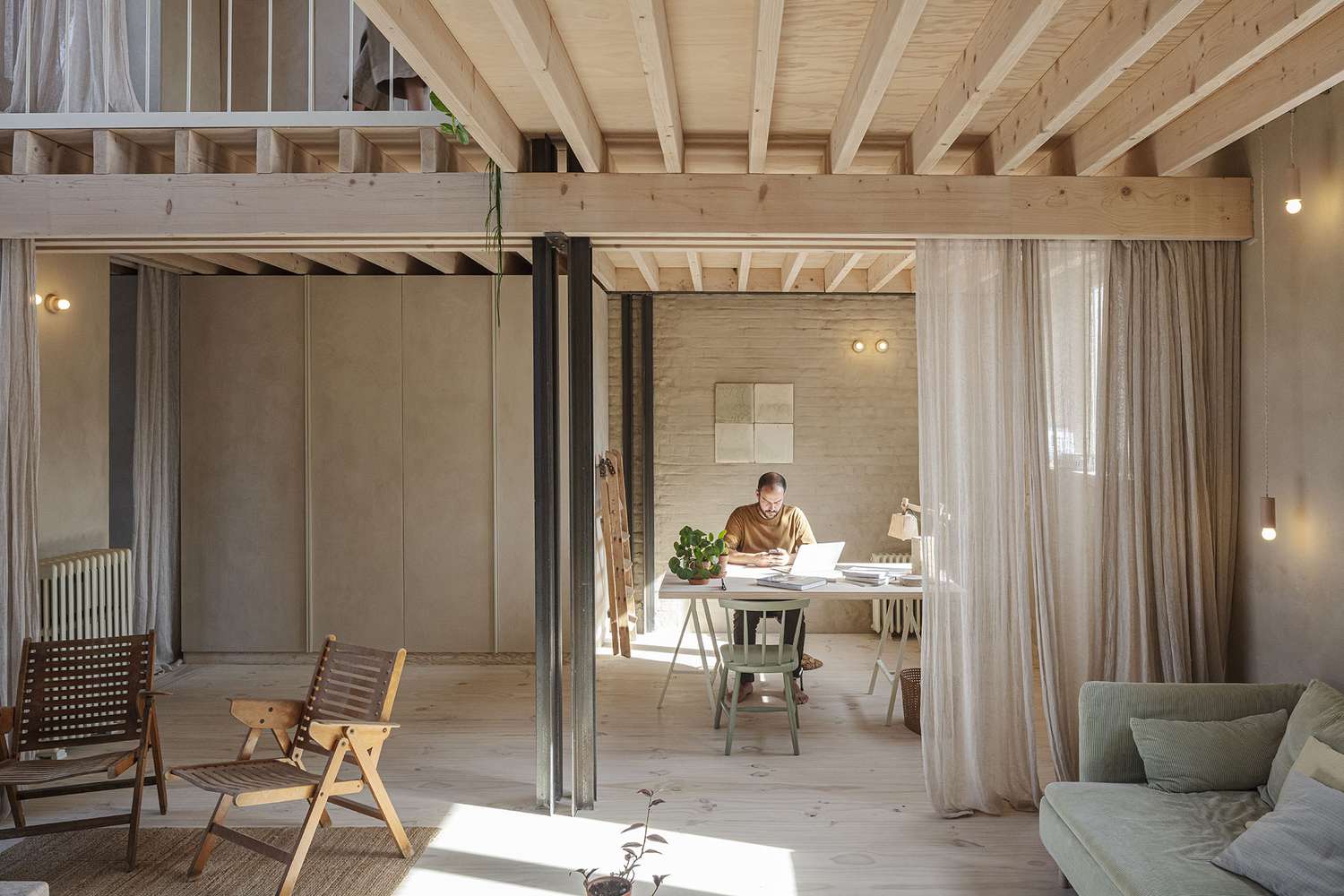The idea of renovating older buildings in order to give them a second life is not a new one. In the last several years, a growing chorus of experts has been pointing out that the preservation and reuse of already existing buildings isn’t just about preserving a city’s heritage—it’s also a great way to reduce the construction industry’s sizeable carbon footprint. Indeed, readapting under-utilized buildings matters now more than ever as cities around the world grapple with a crisis in affordable housing and the ongoing challenges brought on by a changing climate.
Over in the Molenbeek neighborhood of Brussels, Belgium, local design firm Hé! Architecture transformed a former industrial building into a mixed-use complex, combining a four-story, townhouse-style residence with some additional co-working spaces on the ground floor.
The project is dubbed Karper, a shortened moniker of the street it’s located on. The existing structure, which was previously used by a disinfectant company, has now been topped with a timber-framed extension on the roof and clad in beige brickwork. The new windows on the facade are quite large, allowing natural light to flood in.
Tim Van de Velde
As the architects explain, the goal was to create a series of flexible and habitable spaces with sustainability in mind, all within an older building that has been given a renewed lease on life:
“The renovation concerns the transformation of an industrial building into a residential house, with a studio and co-working space. In this project we focused on densification, the circular economy and cohousing. The notions of subtlety, simplicity, repetition and flexibility were always central in this project to create an easily adaptable, low-tech building.”
Tim Van de Velde
The layout is arranged with two adjacent co-working spaces on the ground floor. The use of soft textiles as partition curtains blends well with the exposed timber structure, creating a down-to-earth aesthetic that is at once both modern, yet natural. The choice to leave the existing steel columns exposed offers a hint at the building’s former past.
There is an emphasis on natural light in the new design, which is complemented with neutral colors and natural materials. In one corner, there is a wooden staircase that goes up to the apartments above. One can also access the garden at the back from the ground floor.
Tim Van de Velde
The second floor is occupied by an apartment that has its own separate entrance and spans three stories. The layout for the residential space has been designed to be flexible so that rooms can be added or dissolved as future needs dictate.
On the first floor of this apartment, we find a sitting room outfitted with a table and bench.
There are also some bedrooms, all of which have been finished with plastered walls in a soothing beige tone, and an exposed timber structure.
Tim Van de Velde
The floor above includes a dining area and a kitchen, both of which open up onto a rooftop terrace.
Tim Van de Velde
The kitchen island is made with rammed earth, resulting in a unique design that is naturally tactile and durable.
Tim Van de Velde
The white-tiled terrace is also connected to the bathroom here, and we love how the bathtub is tiled similarly and situated on the same level as the terrace to create a luxurious experience.
Tim Van de Velde
The firm’s low-tech approach meant carefully selecting materials that were either locally sourced or recycled in some way:
“The roof extension is built in a timber frame structure with exposed beams. Straw bales from a nearby farm were chosen as the insulation material. Clay plaster and rammed earth from the waste soil of Brussels building sites are used for finishing. Second-hand recycled products add character and prevent additional emissions from new materials.”
The design also incorporates design details simplified maintenance for users, both present and future, such as the simple knot connections of the structure, which allows it to be easily disassembled if need be.
As the designers explain, they hope that the project sends a clear message about how simple materials and techniques can be used in urban projects as well:
“By using bio-based materials as much as possible, instead of conventional construction materials, the building has a very low ecological impact and provides a healthy and pleasant living environment. With this project we want to show that building in renewable, raw and back to basic materials are no longer just for rural living but they can also be applied to urban assignments.”
To see more, visit Hé! Architecture.
